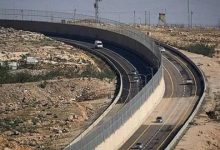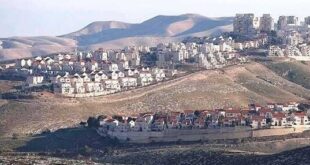By: Madeeha Al-A’raj
The National Bureau for defending land and resisting settlements ( nbprs ) stated in its latest weekly report , that occupation authorities spare no effort in serving settlement and in the occupied Palestinian Territory since 1967 including Jerusalem. Recently, they have expanded the cellular coverage in settlement areas and installed monitoring cameras around the settlements and outposts to encourage settlers and protect them. Thus, Communications Minister, Benny Gantz issued a decision allowing cellular companies to expand the 4G communications network for the benefit of the settlements within two years to cover 95% of the West Bank instead of 75%, which means Occupying the air of all areas of the West Bank and its communication and internet services, while the occupying power continues to deny Palestinian companies providing telecommunications services from using the 4G and 5G, which harms the Palestinian telecommunications sector as the fundamental pillar in the development of the economy.
Within the context, the occupation authorities, in cooperation with settler organizations, began to install cameras in the spring areas belonging to the Gush Etzion Settlements Council in the West Bank, which aim to provide protection for settlers too. Knowing that there are 10 springs dominated by the Gush Etzion settlements. The cameras will broadcast 24 hours a day, directly connected to security rooms, including one in the Israeli Knesset, to monitor what is happening in those areas.
On the other hand, the Israeli policy of demolishing Palestinian homes and facilities continues, and the occupation authorities facilitate the expansion of construction for settlers. Last year, they transferred more Israeli settlers to settlements in the occupied West Bank. Within the context of competition in the past Knesset elections, plans were advanced to build 12,159 housing units in West Bank settlements, which was more than any other year since 2012. Last year, the Israeli authorities demolished about 650 Palestinian homes and other buildings in the West Bank, including East Jerusalem, which resulted in the displacement of more than 800 people. The demolitions took place because most of the buildings lacked Israeli building permits, which are almost impossible to obtain. Israel thus recorded the highest rate of home demolitions in the last 4 years
A week ago, a tender was closed for a plan to pave the “Qalandiya Underpass” – a road designed to enable access to Israel for the settlers of the Ramallah area, without passing through the traffic jams on Qalandia Checkpoint near Jerusalem. Moreover, Transport Minister Miri Regev also issued a press release announcing yesterday that a contract had been signed with the Moriah Company and that a special budget had been allocated for detailed planning for the a-Za’im Al-Azaria Road, which would allow all Ma’ale Adumim and E1 areas to be closed to Palestinians. Another tender, published in January 2021 for the management and planning of the project to widen Road 437 between Hizma and the Sha’ar Binyamin Industrial Zone, was also closed about two weeks ago, besides, the expansion of road n. 505 to become a wide road from the east to the west of the Jordan Valley.
For her part, the Israeli Minister of Transport, who announced that those settlement plans on the eve of the Knesset elections, also indicated that the tender for the Huwwara bypass project has been closed, which means that work on building the street will soon be done to facilitate the movement of settlements in the Nablus area in Yitzhar, Itamar, Elon Moreh, as well as the outposts. Settlement activities spread in the area and diverting their movement to a bypass road designated for settlers without passing through the Palestinian villages and towns there.
As for the settlement activities, the occupation authorities issued a military order to seize 19 dunums of the lands of Azzoun Atma village in Qalqiliya Governorate, with the aim of building 66 settlement units for the settlement of Oranit established on the lands of the village, while the occupation mechanisms continued to raze lands in Wadi Abd al-Rahman area north of Salfit city, they bulldozed large areas in favor of building 800 settlement units belonging to the settlement of Ariel. It was noted that during the past two years, the occupation forces bulldozed about 1500 dunums in the aforementioned area. In the Einoun area, east of Tubas, in the northern valleys, the occupation forces uprooted about a thousand tree seedlings that the Palestinian Ministry of Agriculture had replanted, instead of trees that the occupation uprooted late last month. Moreover, last January, the occupation forces uprooted about 10 thousand forest trees in the Einoun area, which were planted on an area of 200 dunums. The occupation mechanisms also swept large areas of Khirbet al-Hadidiya lands, east of Tubas, in the northern Jordan Valley, in preparation for establishing a settlement investment project belonging to the “Hamdat” settlement, which the occupation authorities established there in 1980.
 المكتب الوطني للدفاع عن الارض ومقاومة الاستيطان منظمة التحرير الفلسطينية
المكتب الوطني للدفاع عن الارض ومقاومة الاستيطان منظمة التحرير الفلسطينية




